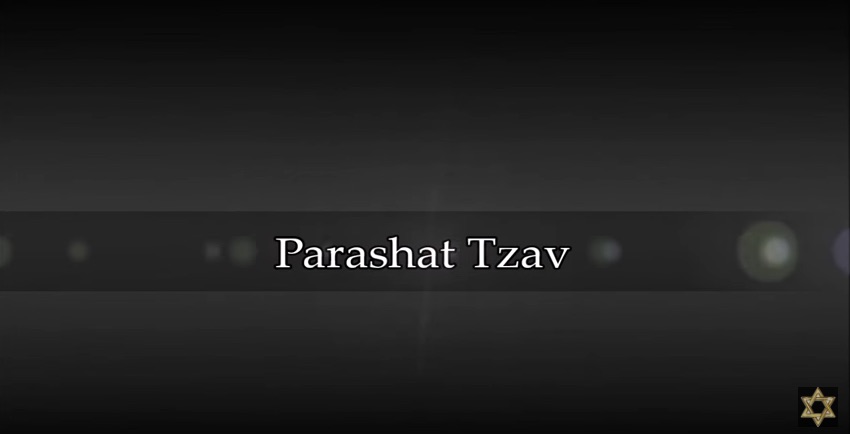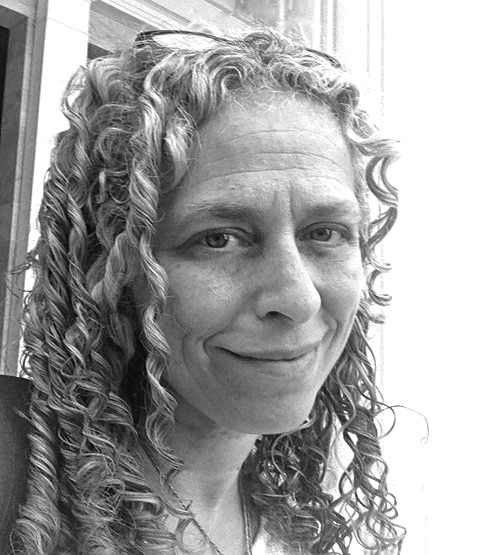
PARSHA: Leviticus 6:3-4, Tzav
“The priest shall dress in linen raiment, with linen breeches next to his body; and he shall take up the ashes to which the fire has reduced the burnt offering on the altar and place them beside the altar. He shall then take off his vestments and put on other vestments, and carry the ashes outside the camp to a clean place.”
Rabbi Heather Miller
Beth Chayim Chadashim

Life experiences, like priestly duties, are messy. We each enter the world through the messy experience that is childbirth. From there, life gets even more complex. Likewise, the duties of the priests were messy. They not only diagnosed skin diseases and slaughtered animals but also attended to ash disposal.
In these verses, the priest’s vestments have presumably become soiled during the daily altar cleaning. Oddly, he puts on clean clothes — to take out the trash. It doesn’t quite make sense, unless the priest is trying to keep up appearances for the sake of those who might see him exit the temple premises.
While I appreciate Judaism’s emphasis on cleanliness, as a germophobe myself, I also recognize that sometimes our obsession with cleanliness can have real and tragic ramifications. For instance, because of cleanliness laws, women are not permitted to be rabbis or scribes. We are not allowed to enter a sanctuary for 33 days after the birth of a male child — 66 for a female child.
Laws that encourage keeping up appearances of being clean are even more troublesome. For years, they have encouraged people to hide their stories of survival from abuse, and experiences with illness or financial trouble. They have discouraged others from fully expressing themselves as gay or having political opinions that don’t match those of their community.
Sometimes we need to ask, “Who is defining what is ‘clean’ and what is ‘unclean’?” “Who enforces the standard?” “What implications does it hold?” And finally, “Is cleanliness next to Godliness?”
Rabbi Zoe Klein Miles
Temple Isaiah

After the fires in Southern California, a confirmation student argued: “I don’t like the saying, ‘Ashes to ashes, dust to dust.’ My friend lost her home. It’s all ashes now. But it is not the same ashes!” Her words struck me. After the fire, is there more to those ashes than just ashes?
In our Torah portion, the priestly clearing of ashes is a sacred act. In his poem “The Deceptive Present, the Phoenix Year,” Jewish poet Delmore Schwartz writes: Who will be able to believe, when winter again begins / After the autumn burns down again, and the day is ashen, / And all returns to winter and winter’s ashes, / …Who will believe or feel in mind and heart / The reality of the spring and of birth, / In the green warm opulence of summer, and the inexhaustible vitality and immortality of the earth?
The burning of Jewish books inspired Polish poet Czeslaw Milosz to write his poem “And Yet the Books.” In spite of fires on the horizon, castles blown up, / Tribes on the march …. / “We are,” they said, even as their pages / Were being torn out, or a buzzing flame / Licked away their letters. So much more durable / Than we are …. / I imagine the earth when I am no more: / Nothing happens, no loss…. / Yet the books will be there on the shelves, well born, / Derived from people, but also from radiance, heights.
There is something of us that survives the ashes: memory, experience, love. We are not simply swept away, but taken up in sacred ritual, and offered into the radiance, the heights, the opulence of earth.
Rabbi Shawn Fields-Meyer
Educator and Author

After making an offering, the Kohen is required to do three things: First he collects the ashes left as residue from the offering, placing them temporarily aside; then he changes his clothes; and finally, he takes the ashes away from the holy space and discards them. Why the costume change?
Rashi teaches that it is simply to keep his fancy clothes clean: “The servant should not wait upon his master in his kitchen clothes.” He puts on his everyday “work” clothes to do a messy cleanup job. It’s an indication of respect for the holiest, most special place of connection with the divine. A Chasidic story brings a different explanation. Rabbi Levi Yitzchak of Berdichev once spotted a cart driver who was wearing the prayer garb of tallit and tefillin — while oiling the wheels of his wagon. The elated rabbi exclaimed to God: “What a people! Even when they grease the wheels of a wagon, they still have You in their hearts!” The Chasidic master perceives holiness — not rudeness — in that scene. He teaches that even when we are doing the most mundane, messy tasks, we can still be in active relationship with God.
This is Rashi’s idea turned inside-out. We should serve our master in our kitchen clothes — and every other outfit, too. The clothes we wear (and the money we spend, the relationships we pursue, the choices we make, the words we speak) every moment of every day are the very garments of holy souls who serve God.
Rabbi Shlomo Einhorn
Yeshivat Yavneh

A full day of animal offerings would culminate and the very next morning the priest would begin with removing the deshen, the leftover ashes. Why wasn’t it taken care of while the offerings were taking place the night before?
Judith Martin is the author of “Miss Manners,” the guidebook on social etiquette. It’s actually quite humorous without intending to be. One person in the book is upset that she was invited to a house where the hostess didn’t talk to her before the meal because she was cooking, or during the meal because she was clearing, or after because she was cleaning. Miss Manners strongly insists that a host or hostess should never do what this hostess did during the meal; it’s not good etiquette. Maybe this is why we shouldn’t do the removal of the deshen during the meal. It’s not appropriate.
Why doesn’t the daily service begin with a more positive act? For example, bringing an offering or perhaps lighting the menorah. There are two classic reasons for animal offerings in the Temple: For Maimonides it’s about shifting our idolatrous tendencies to a more God-directed behavior. According to Ramban, it is about envisioning oneself being offered to God. Maimonides’ position has troubled many scholars because of its pagan undertones. Perhaps we can suggest a meaningful rationale. The Temple is a place where the Shechina, God’s presence, permeates at a much more intense level than elsewhere. It’s the spot of God’s revelation. In order to experience that encounter, we need to first remove the dross that can get in the way.
Rabbi Lori Shapiro
The Open Temple, Venice

Living in Los Angeles, we spend a lot of time on our exterior selves. And new trends in soulful wellness advertise assisting in outer perfection. But what exactly is the mind/body connection to wellness? Leviticus 6:3 lends an insight: “The priest shall dress in linen raiment” (raiment, being an antediluvian word for garment). The Hebrew for the priest’s garment is usually called in Leviticus ketonet, but in this verse it is called mido vad, linen garment. Why this newfangled word?
An ascending Jewish fad, with a little help from Rashi, provides an insight, if not an answer. Rashi equates the word for garment with the word for measure, as they share the same bilateral root (mem, daled). This transforms the verse into an insightful window into our fabulous closets: The priest shall dress in linen according to his measure. The Hebrew word for this, middah, is also a word for describing character values. Just what was the value of the priest’s kindness? His compassion? His patience? And what if our garments today represented our character? What would it be to wear our hearts on our sleeves?
As time rapidly speeds by, is it important to spend countless hours on a blowout, shopping for faddish jeans or perfecting our outer cropping? The priest is bringing an offering for purity; in fact, he must take off all of these garments and then don new garments in order to enter a clean place. Perhaps it’s time for us to shed our skins as well. As we enter the days before Passover, may we consider disrobing our outer klipot (shells), and undress into our purest essence.























 More news and opinions than at a Shabbat dinner, right in your inbox.
More news and opinions than at a Shabbat dinner, right in your inbox.